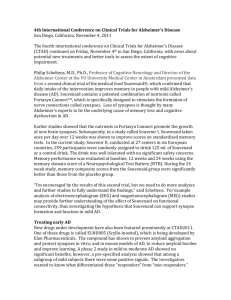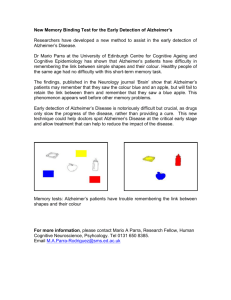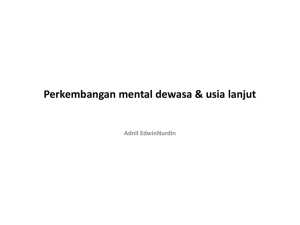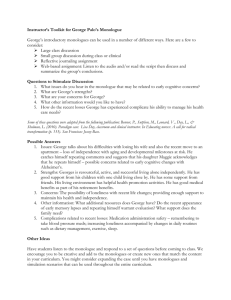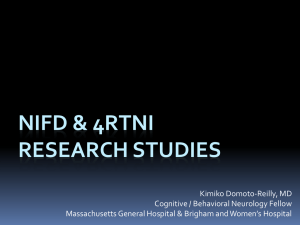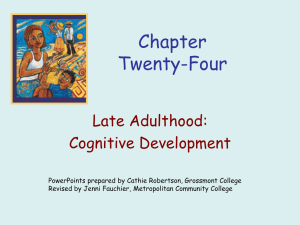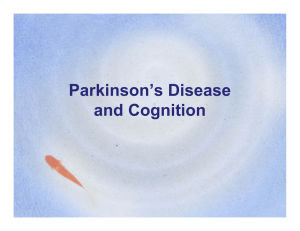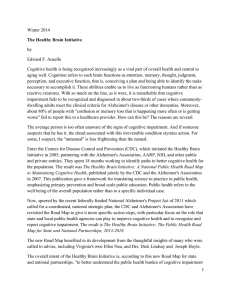Dementia – Part II
advertisement
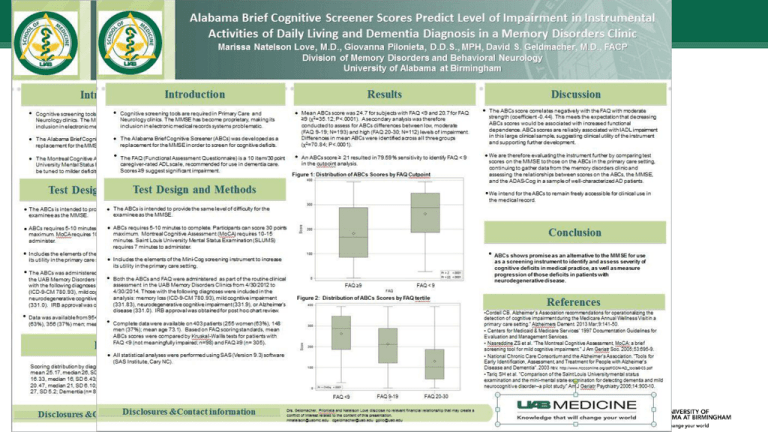
Alabama Brief Cognitive Screener (ABCs) They’re impaired, what now? • Screening labs for reversible causes: • CBC • Electrolytes, glucose, kidney function, liver function • thyroid function • vitamin B12 level • Notably absent: syphilis screening unless they have a specific risk factor Neuroimaging • “Structural Neuroimaging is appropriate to detect lesions that may result in cognitive impairment” * • Rule out cerebrovascular disease • detect segmental atrophy of neurodegenerative syndromes * “Practice Parameter: Diagnosis of Dementia” (Knopman et al, Neurology 2001:56:1143-53) What is segmental atrophy? Duara et al, Neurology 2008:71:1986-92 Most Common Cause of Dementia Aging and Preclinical Alzheimer’s disease Sperling et al. Alzheimer’s and Dementia, 2011;7:280-92. Mild Cognitive Impairment due to Alzheimer’s disease • Biomarker evidence of Aβ deposition (by PET or CSF) OR • Evidence of Neuronal injury (MRI, CSF, or FDG-PET) NIA-AA criteria, 2011 Dementia due to Alzheimer’s disease• Insidious onset • Clear-cut history of worsening of cognition • Amnestic: most common, impaired learning and recall of recently learned information AND ≥ 1 other cognitive domain • Nonamnestic: • Language presentation: most prominent • Visuospatial presentation: spatial cognition, including object agnosia, impaired face recognition, simultanagnosia, and alexia. • Executive dysfunction: impaired reasoning, judgment, and problem solving. NIA-AA 2011 Criteria DSM-V Criteria for Major Neurocognitive Disorder Due to Alzheimer’s Disease • insidious onset & gradual progression ≥ 2 cognitive domains • Probable- either: • genetic mutation (fmh or test) • 1) decline in memory & ≥ 1 other cognitive domain, • AND 2) steady progression, • AND 3) no evidence of mixed etiology Diagnostic and Statistical Manual of Mental Disorders, Fifth Edition, American Psychiatric Association, 2013.
